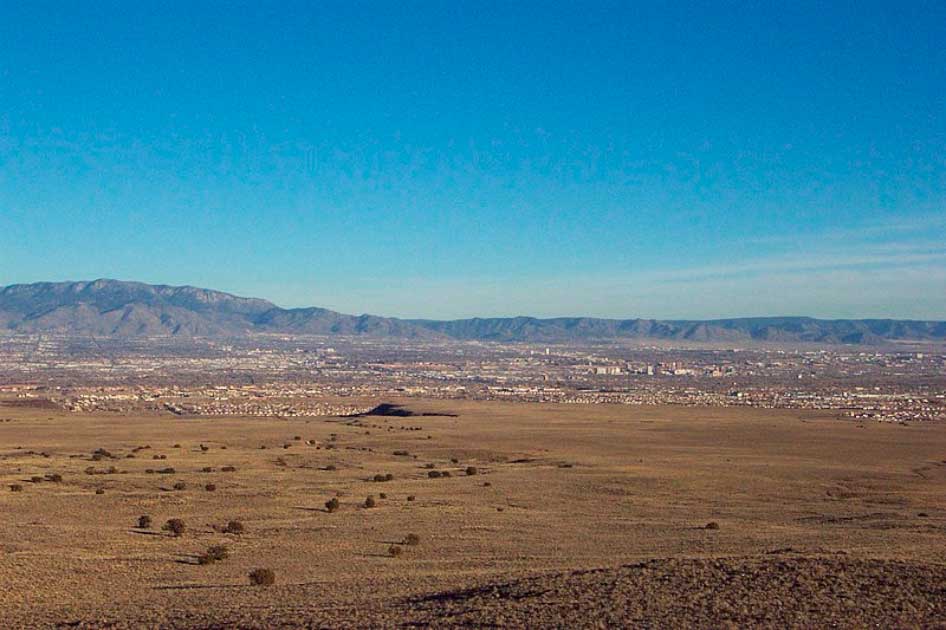Christine Ross and her dog Ruca were having their nightly walk along a dry creek bed in the undeveloped West Mesa area of Albuquerque, New Mexico, in February 2009. Ross let Ruca off his leash to run around the ghost of an abandoned construction site where the pair had walked before.
Ruca found a bone in the sand; this wasn’t the first time the dog found bones during their walks. It is a desert, and animal bones pop up here and there. Christine looked at the bone and immediately noticed it did not look like the usual bones Ruca had previously found.
She sent a photo of what looked like a femur to her sister, a nurse, for help identifying what it was Ruca had found. It was a femur, a human femur. Ruca and Christine had discovered the burial ground of a serial killer, and the first remains of the West Mesa Murders.
What Do We Know?
The West Mesa Murders have been considered to be New Mexico’s most “horrifying murder case in the state”. What made the West Mesa Murders stand out was that this was the first time New Mexico knew they were dealing with the work of a serial killer.
Police began digging after searching the sand for over a month, and they unearthed the skeletal remains of 11 women and an unborn child, buried in multiple graves in the area. Who were these women and who was their killer, who became nicknamed the West Mesa Bone Collector?
But it seems we have got nowhere. Thirteen years after the West Mesa Murders were uncovered, it seems the investigation is at a standstill. It remains an active case, so the police could be withholding relevant information, but there are things we do know.
The West Mesa Murders occurred between 2001 and 2005, and there is the most solid piece of evidence in this case. Satellite images of the area that were taken from 2003 to 2005 show visible tire tracks in the sand leading toward where the women were found.
The satellite images also show small patches of disturbed earth. The satellite captured images as the number of patches of disturbed land, an area which increased as a new grave was dug.

The victims were all considered “high-risk” by the police. High-risk individuals include the homeless, sex workers, drug users, and individuals who fall under one or all of these categories. The lifestyle or work of these individuals puts them in risky situations, and they are easy victims of violent crimes.
Ten of the women linked to the West Mesa Murders were known drug users and/or sex workers. These women had their demons, and their families were not aware something was wrong until sometimes years after the girls had died because they would go long periods without hearing from these women.
What makes this even more tragic, many of the victims had children of their own who were left behind, never to see their mom again.
The Victims
The West Mesa Bone Collector victims were more than the struggles they were facing in their lives. The remains of the victims that were found were all individuals who disappeared before 2006. The names of the 11 victims of the West Mesa Murders are:
Monica Candelaria, 22 – Her friends told police in 2003 that they heard Monica had been murdered and buried in West Mesa. Sadly, the rumor was true.
Jamie Barela, 15 – Jamie was not involved with drugs or sex work like the other ten victims. She was last seen with her cousin Evelyn Salazar.
Virginia Cloven, 26 – Her brother was murdered while she was in high school, and she and a brother ran away not long after. Virginia had moved in with her boyfriend when another tragedy struck. Her boyfriend was hit by a car and fell into a coma. She couldn’t afford rent and quickly became homeless.
Victoria Chavez, 26 – She was the first woman to have her remains identified.
Cinnamon Elks, 32 – Cinnamon was the third set of remains identified from the West Mesa Murders. She was friends with three of the other victims: Julie Nieto, Michelle Valzed, and Victoria Chavez.
Syllannia Edwards, 15 – The only African American victim of the West Mesa Murders, she ran away from a foster home in Lawton, Oklahoma. She was the only victim of the West Mesa Murders who was not from Albuquerque.
Michelle Valdez, 22 – She had a young daughter at the time of her disappearance and when her remains were recovered, so were the remains of her unborn four-month-old baby.
Doreen Marquez, 27 – Doreen had two daughters, and according to her family, it was only in the last year before she went missing that she began to use drugs and have problems in her life.
Julie Nieto, 24 – Julie left behind a son when she went missing. Two years after her disappearance, her sister Valerie was found deceased, and her mother said that Julie’s disappearance was hard on Valerie, who became profoundly depressed. Julie’s mother was notified that her daughter was a victim of the West Mesa Bone Collector shortly after Valerie was laid to rest.
Veronica Romero, 32 – Her family reported her missing when she was 27 years old. She had five children at the time of her disappearance.
Evelyn Salazar, 23 – Evelyn was a mother of two and was Jamie Barela’s cousin. The two went missing on the same night.
Suspects
Two of the main suspects in the West Mesa Murders are Lorenzo Montoya and Joseph Blea. Montoya lived less than three miles away from where the women were found and was known by police to pick up sex workers. He was also known to be violent.
In 2006, Montoya strangled a sex worker to death in his trailer. He was shot and killed by the woman’s boyfriend shortly after. The West Mesa Bone Collector was active until 2005, and Montoya died in 2006. Is it possible that he was Albuquerque’s first serial killer?
The other suspect, Joseph Blea, can be best described as “an evil guy.” In the 1980s, Blea was known to break into the homes of 13, 14, and 15-year-old girls who lived by the local middle school, and he would rape them.

In 2015, Blea was also a suspect in the murder of a sex worker. Police found his DNA in her inner waistband and on her belt. He had a record with the police of being located near the area where prostitutes worked, and had been placed in the area over 130 times from 1990 to 2009.
What links Blea to the West Mesa Murders is a single tree tag. In the area where the bodies were discovered, a tree tag was found near the graves. The tag was traced back to a nursery Blea was known to visit.
In 2010, a rape kit from the 1980s was retested and linked Blea to the rape. In 2015 Blea was sentenced to 36 years in prison for the rape case; he consistently denies any involvement with the West Mesa Murders. With one of the suspects dead and the other in jail, it is unknown if the true identity of the West Mesa Bone Collector will ever be revealed.
Top Image: The victims were all considered “high risk” by police, either sex workers or drug users or both. Source: Microgen / Adobe Stock.